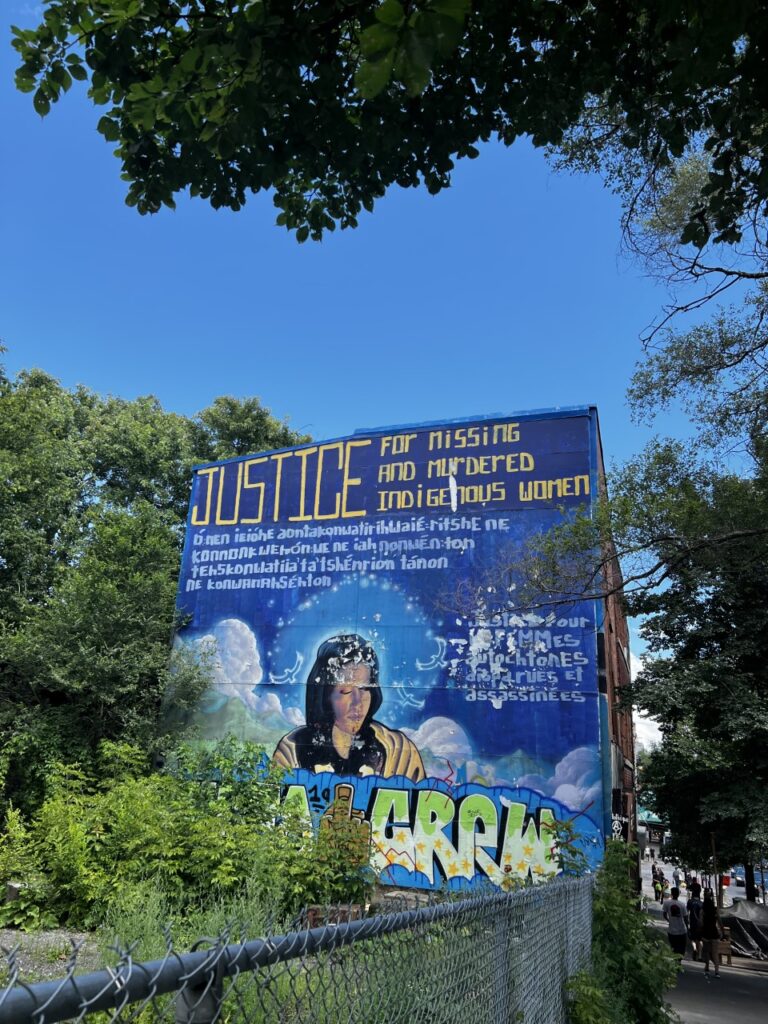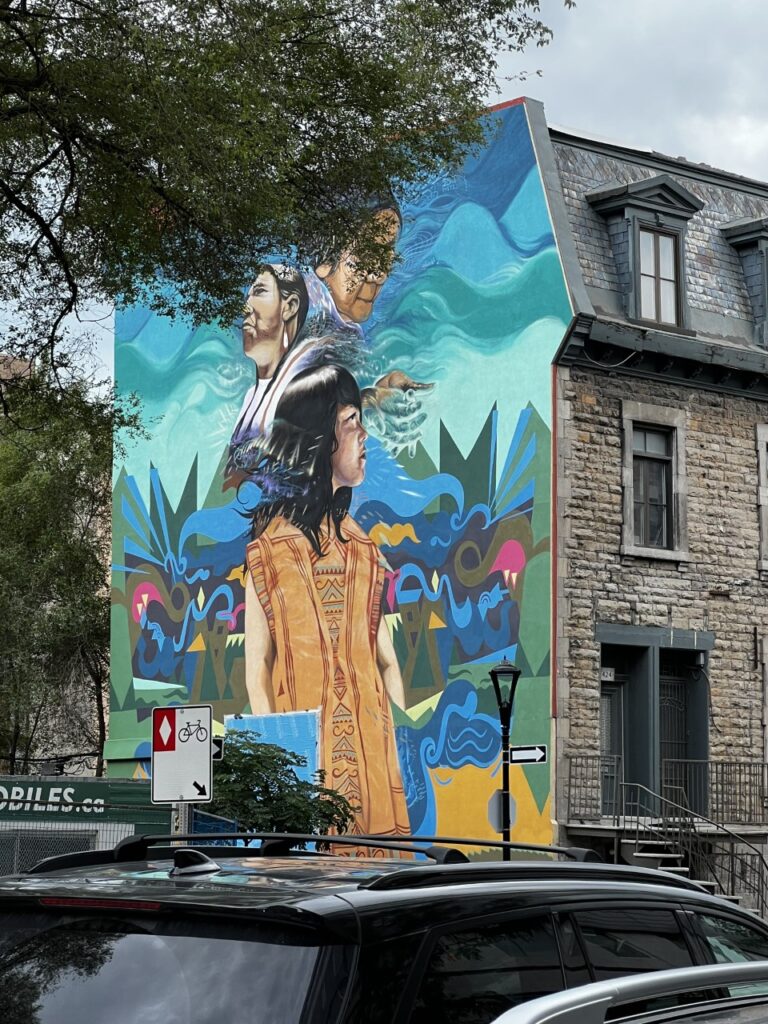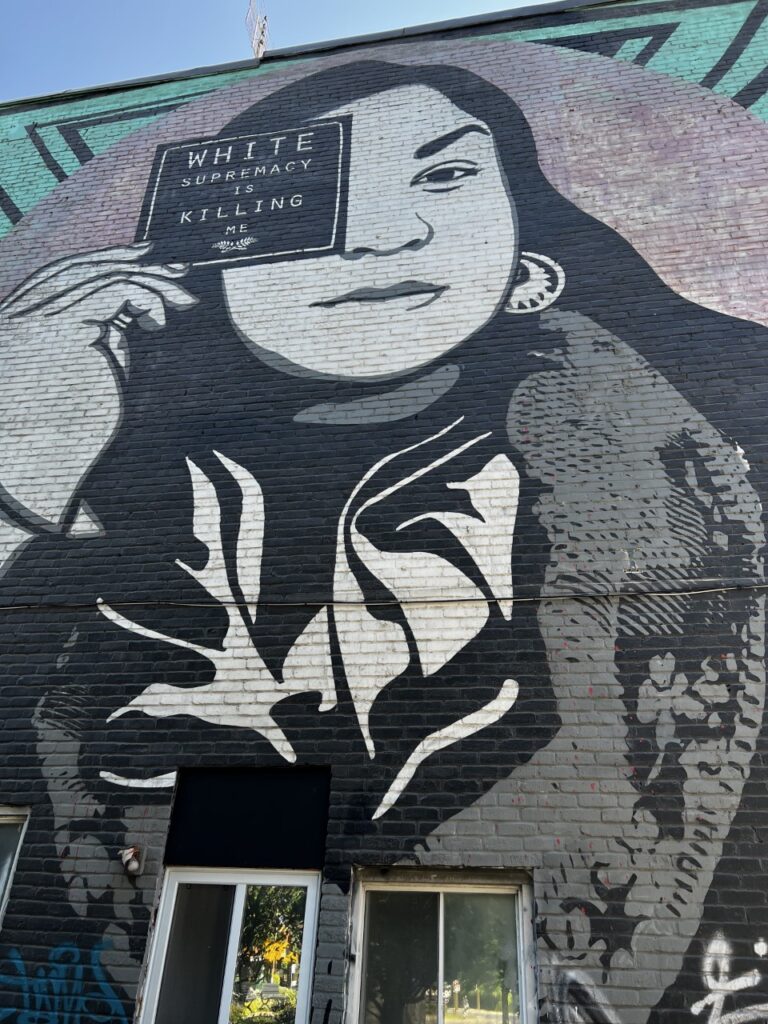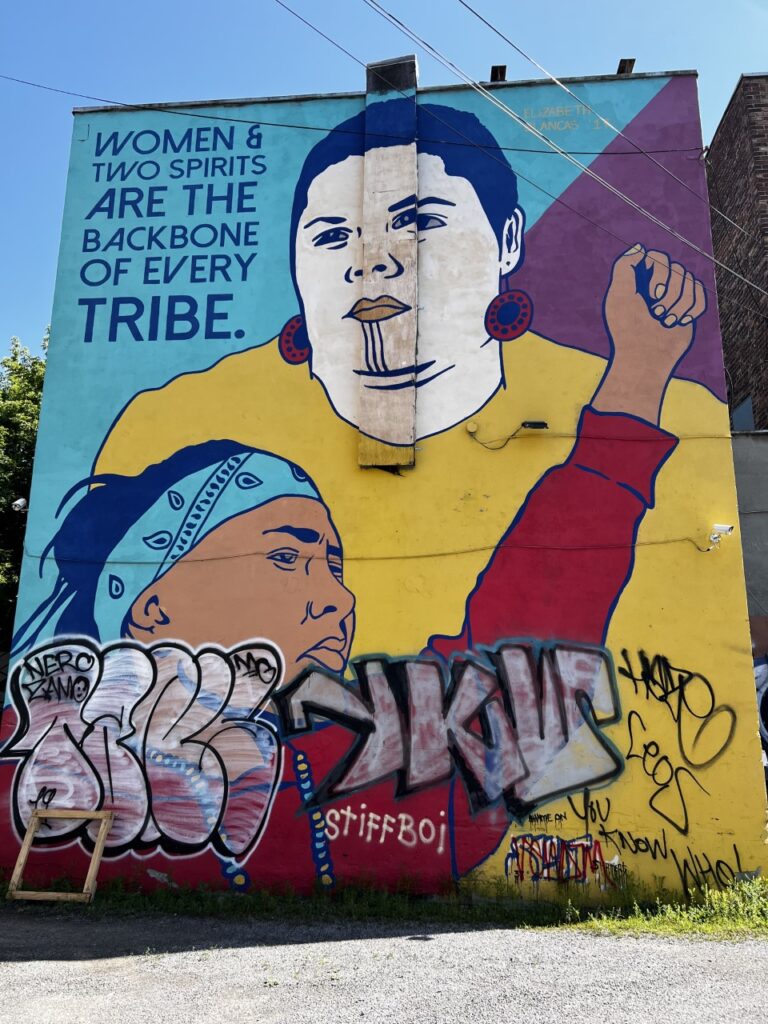I’m currently in Montréal, Québec for three weeks as I complete a course related to my M.Ed. Besides meeting my cohort, who I have been learning with for 2 years now via Zoom, I have really enjoyed walking around and discovering the city.

As I walk, I pay attention to how the shop windows are dressed up or down, the way slogans are written, I pay attention to what people around me are saying and how they are saying it (example “ouais!”). I also pay attention to graffiti and murals. To be honest between doorways, bees, and streets, I likely take as many photos of painted walls.
What I’ve noticed in Montréal is there is a strong creative vibe, there is also a vibe that is calling out for justice. Specifically speaking, I have noticed a few murals that cry out the injustice experienced by the Indigenous women and girls in Canada.

This, like many other topics that are woven into the history of Canada, is raw, and is difficult. A question teachers may have is how can we present this topic to our students in a way that is respectful, that brings them into the conversation, and also age appropriate (as some of you may teach younger students).
As a high school teacher, I have been talking about May 5 and the Missing and Murdered Indigenous Women and Girls for years now. I can do that. They have the capacity and usually are mature enough to recognize this is a serious topic and one that deserves respect. Primary teachers should take into consideration the age of your students and how you would approach it. However, I don’t believe it means it’s a topic that can’t be discussed with young students. Like with the topic of residential schools, it should be approached with care.

For May 5, I usually hang red dresses around my classroom, this is a change to the class environment students notice right away and so they begin to have questions and chat amongst themselves about what it might be fore. I can start conversations in French with them with questions such as “Qu’est-ce qu’il y a de different dans notre salle de classe?” “Pourquoi pensez-vous que les robes rouges sont utilisées?”
This week in my course we discussed the different ways of responding to something, like in this case an idea or an experience. These are physically, spiritually, emotionally, intellectually. You can ask your students, « Quand vous êtes entrés dans la classe, et vous avez vus les robes, qu’est-ce que vous avez senti? Avez-vous eu une réaction émotive? Avez-vous eu une réaction physique? Voulez-vous la décrire pour nous? » And here is the opportunity for you to help students find the words in French for the answers they are giving. They can use English words as they need, and you can help them to fill in the blanks with the French words. Here the students are thinking of a topic that is complex and complicated, using the French they know and hearing and seeing you model the French they are grasping for in their answers.

I can’t wait to show these photos to my classes and ask them if they have noticed such murals in our community. Think of the conversations we can have on whether they feel this is an important topic to be presented on a mural, perhaps there are other ways they think would be more effective. I can’t wait to open the space for the students to think about this topic, the impact it may have on our own community, and what they can do to advocate for this topic. Students will be able to work together, practice their French together and with the teacher circulating they can be helped to fill in the gaps with the French they are grasping for.
To learn more about Murdered and Missing Indigenous Women and Girls:
Moosehide campaign bringing awareness